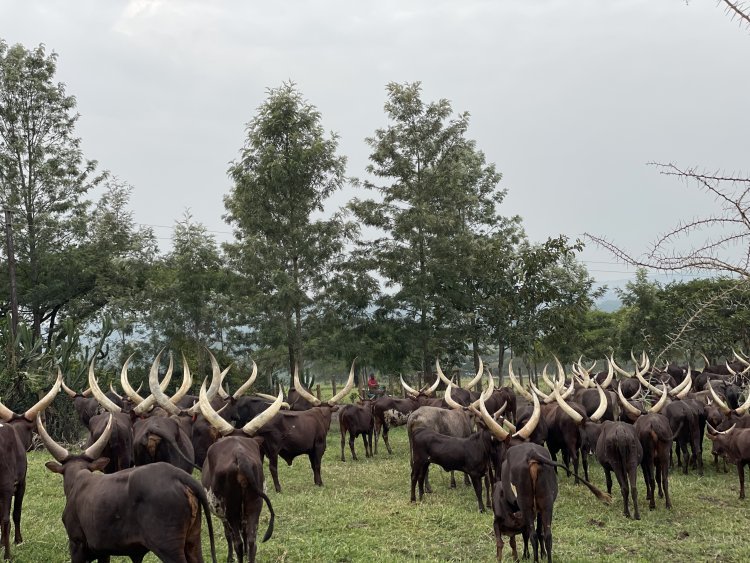Government bans transportation of livestock at night; practice is now punishable by the law.
According to Minister Bright Rwamirama, the decision has been informed by the invasion of cattle keepers ( Abalaalo) looking for pasture and water for their animals, a practice that has escalated livestock diseases.

Government has banned transportation of livestock at night in a move aimed at curbing the continued spread of livestock disease.
While issuing the new temporary guidelines for livestock movements in Northern and North Eastern Uganda on February 3rd at Media center in Kampala, the State Minister for Agriculture, Animal industry and Fisheries Lt. Col Bright Rwamirama stated with effect from 1st February to 31st March 2022, no livestock shall be allowed to move at night.
According to the State Minister, the decision has been informed by reports of the invasion of cattle keepers looking for pasture and water for their animals known as (Balaalo) . These illegal and unmonitored movements and grazing activities have have increased the spread of livestock diseases and conflicts between them and land owners.
President of Uganda H.E Yoweri K. Museveni appointed a Sub-Cabinet committee to investigate and organize how to evict what he called the ‘In disciplined group’’ from the community, government and private land in the Northern and Northern Eastern part of this country.
According to the Minister, other measures to ensure during this exercise include obtaining letters of no objection from veterinary authorities of the final destination of the livestock before any movement regardless of breeding, slaughter or cultural functions within the Lango, Acholi and WestNile subregion.
In addition to that, livestock moving for slaughter within the operation area must go through designated routes which include Karuma to Pakwachi to Nebbi to Arua, Karuma to Gulu to Kitgum, Apac to Kamdin, Lira to Kandin among others and in order to have controlled coordination only two stock routes will be used by breeders whereas those for slaughter from South to North and Eastern Uganda will pass through Karuma and Nile bridges.
Furthermore, the livestock being transported must be received and acknowledged by the recipient district and a copy of a permit must be submitted to the District Veterinary Officer in charge of the abattoir or slaughter facility of the final destination.
‘No livestock shall be off-loaded before reaching the final destination specified on the movement permit and also no animals shall be loaded on the way’’ the Minister added emphasizing that these must go through established Police checkpoints and their movements shall be monitored by Police up to the final destination.
These New guidelines will also see livestock moving to South Sudan being accompanied by International Movement Permits issued by the Commissioner Animal Health as livestock shall also not leave or go through areas under any form of quarantine.
Hon. Bright Rwamirama finally informed that these measures are all in good faith and only intended to prevent disease spreads, stop illegal movement of livestock and enabling Ugandan’s in the Northern and Eastern part of the country to continue with their normal life

































